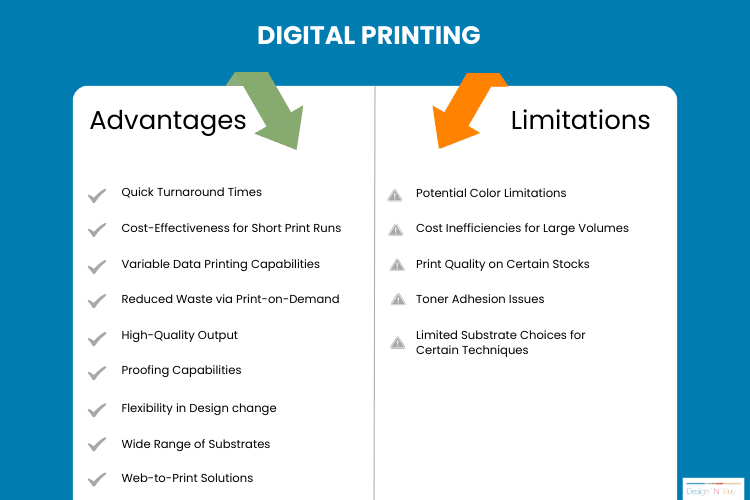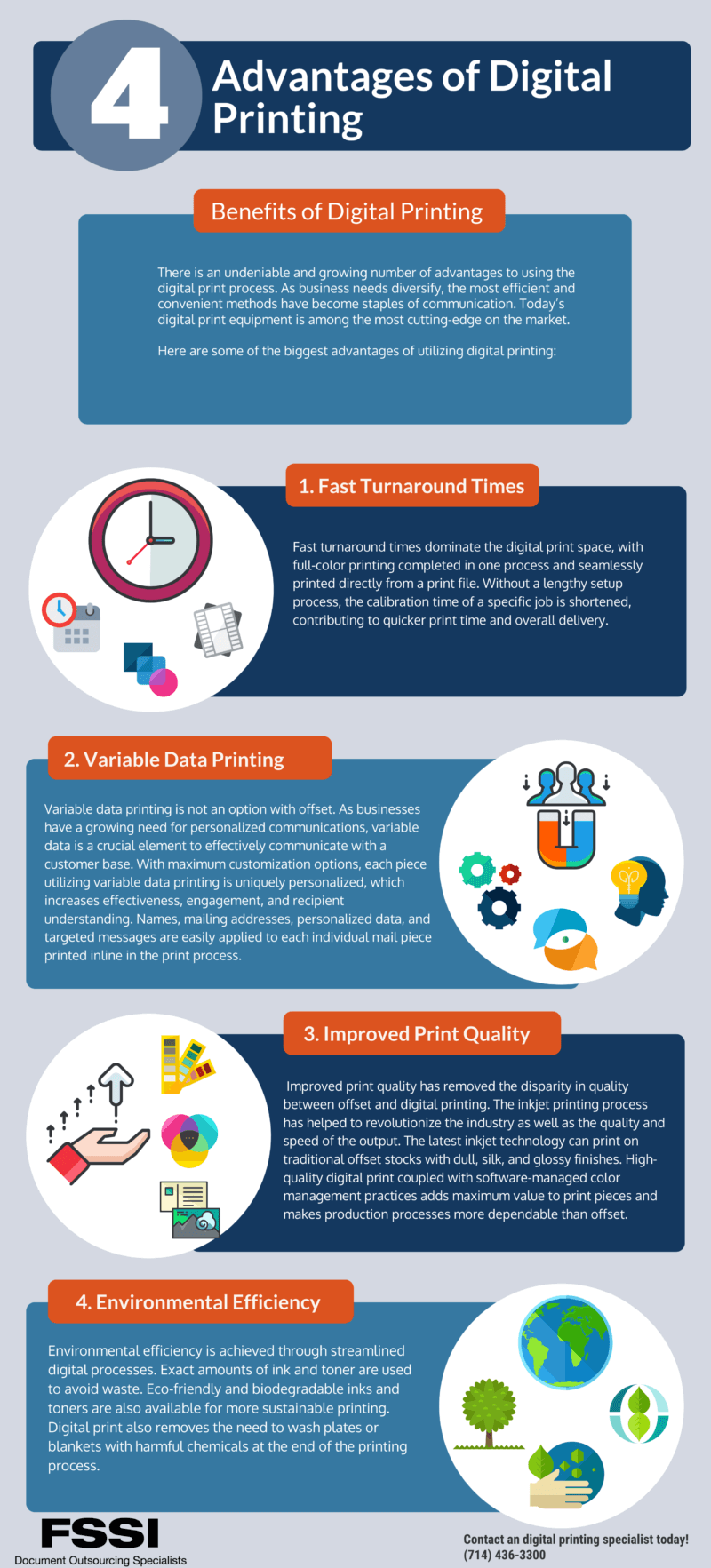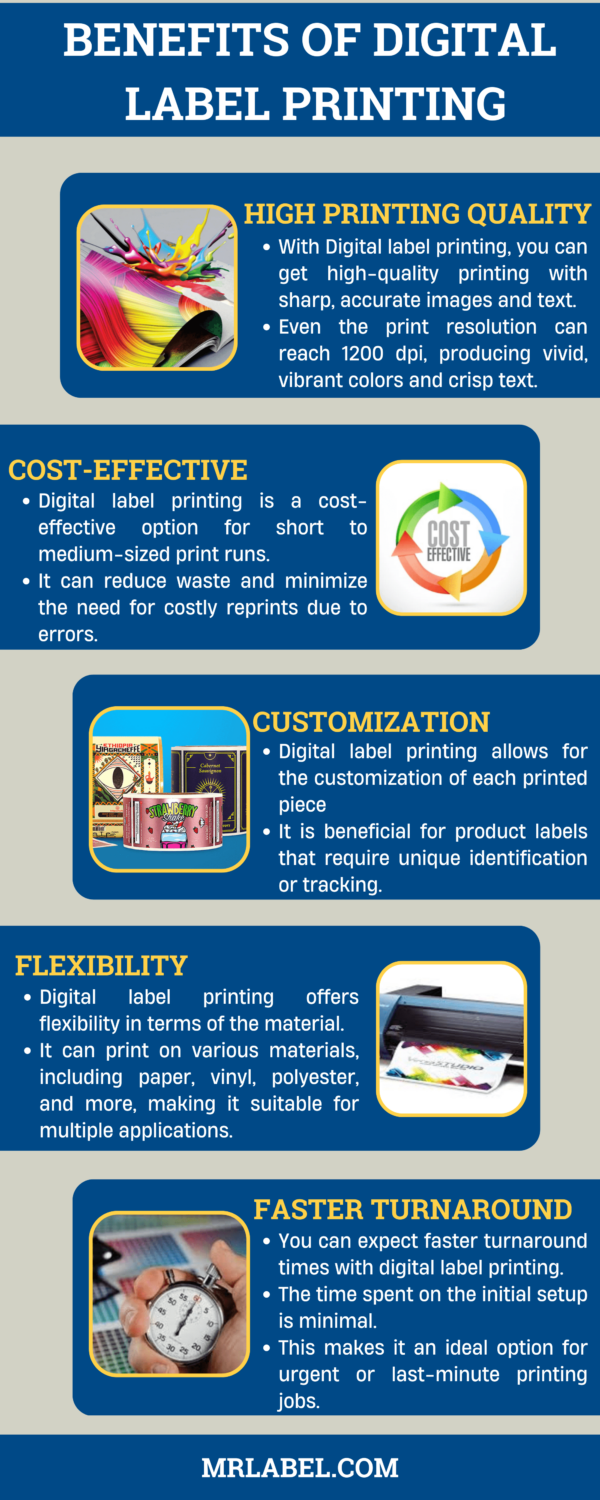About Digital Printing
Wiki Article
All About Digital Printing
Table of Contents6 Easy Facts About Digital Printing ExplainedDigital Printing - An OverviewSome Known Factual Statements About Digital Printing 10 Simple Techniques For Digital PrintingExcitement About Digital PrintingOur Digital Printing Diaries
Variable data printing, such as direct mail with customized codes and addresses, is ideally fit for electronic printing. Digital quick printing only needs four steps of layout, review, printing and binding to get everything done. Digital fast printing has an exceptional advantage: print on demand.According to PMMI, digital printing permits brands and producers to respond quickly to customer needs while boosting the supply chain, lowering warehousing price and waste, and delighting in faster time to market. That all sounds terrific, but how does this innovation do all that? The major differentiator of these innovations is that there are no set-up costs and no plates with electronic printing.
Fascination About Digital Printing
This results in quicker turn-around time and lowers price when utilizing electronic printing.Digital printing is extremely versatile, so it's simple to make adjustments to the plan layout rapidly. It all goes back to the plates.
With traditional printing approaches, short-run printing is simply not feasible. Since a wonderful layout can make or break your item, electronic printing continually produces high-quality, clear and colorful graphics each time.
Digital printing is the process of printing digital-based images straight onto a range of media substratums. There is no requirement for a printing plate, unlike with balanced out printing. Digital data such as PDFs or desktop publishing files can be sent straight to the electronic printing press to print on paper, photo paper, canvas, fabric, synthetics, cardstock and other substratums.
The 45-Second Trick For Digital Printing
According to PMMI, electronic printing enables brands and producers to respond promptly to client needs while enhancing the supply chain, decreasing warehousing cost and waste, and enjoying faster time to market. That all noises wonderful, yet how does this modern technology do all that? The major differentiator of these modern technologies is that there are no set-up costs and no plates with electronic printing.According to Wikipedia, the greatest distinction between digital printing and conventional methods such as lithography, flexography, gravure, or letterpress is that there is no demand to replace printing plates in digital printing, whereas in these analog printing methods home plates are continuously changed. This results in quicker turn-around time and decreases cost when making use of electronic printing.

Digital Printing Things To Know Before You Get This
With standard printing approaches, short-run printing is simply not feasible. Since a great design can make or break your product, digital printing consistently produces high-grade, clear and vivid graphics each time.
According to PMMI, digital printing see it here allows brands and suppliers to react promptly to consumer needs while boosting the supply chain, minimizing warehousing price and waste, and delighting in faster time to market. That all noises great, but how does this innovation do all that? The significant differentiator of these innovations is that there are no set-up fees and no plates with electronic printing.
Excitement About Digital Printing
i loved this According to Wikipedia, the best difference between digital printing and typical techniques such as lithography, flexography, gravure, or letterpress is that there is no requirement to replace printing plates in digital printing, whereas in these analog printing methods home plates are continuously replaced. This leads to quicker turnaround time and lowers expense when using digital printing.Digital printing is extremely flexible, so it's simple to make changes to the bundle layout quickly. It all goes back to the plates.

Digital Printing Fundamentals Explained
Digital printing is the process of printing digital-based images directly onto a range of media substrates. There is no requirement for a printing plate, unlike with countered printing. Digital documents such as PDFs or desktop publishing data can be sent out straight to the digital printing press to publish theoretically, image paper, canvas, material, synthetics, cardstock and various other substrates.Report this wiki page